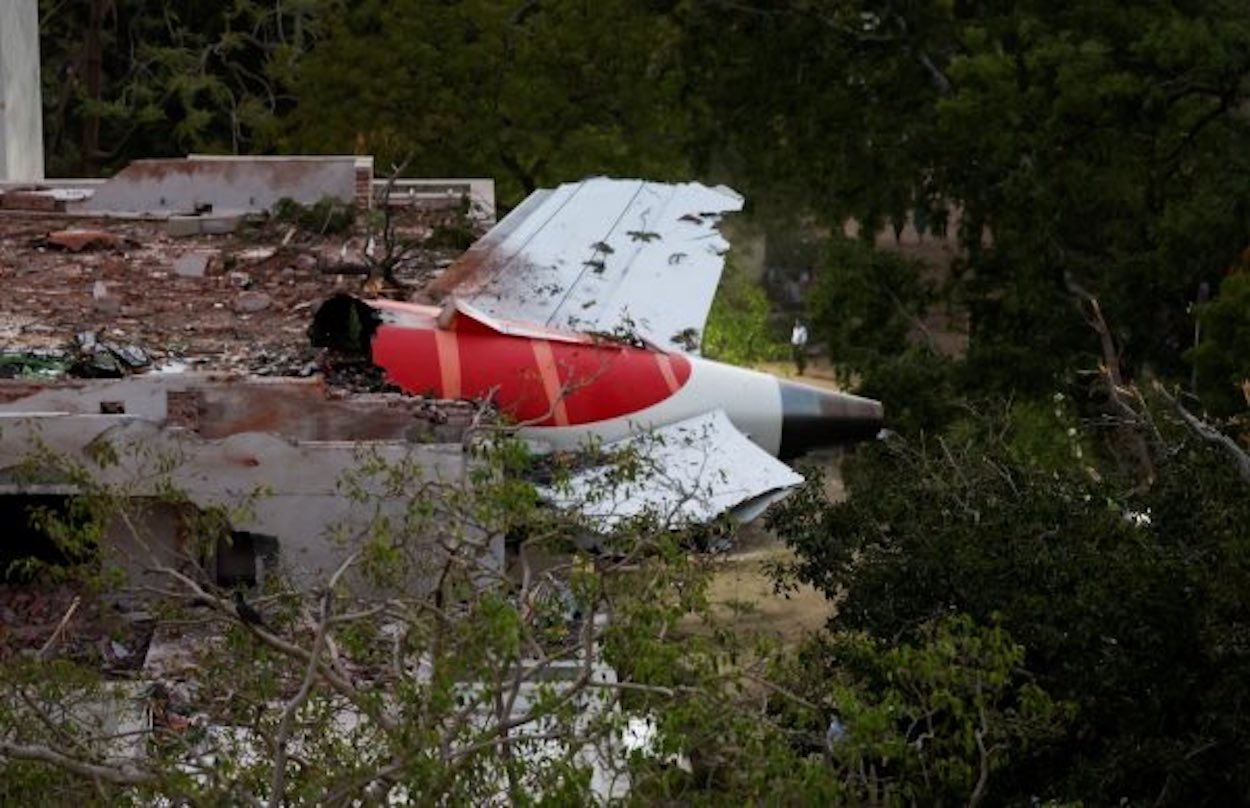
India’s Aircraft Accident Investigation Bureau (AAIB) has released its preliminary report on the June 12, 2025 crash of Air India Flight AI171, a Boeing 787-8. The jet crashed shortly after takeoff from Ahmedabad, killing 241 of the 242 people on board and 19 on the ground.
Preliminary Air India 787 Crash Report: Fuel Cutoff Switches Flipped Seconds After Takeoff
The AAIB report raises more questions than answers about the cause of the crash.
Key Findings
- Three seconds after liftoff, both engine fuel control switches moved from “RUN” to “CUTOFF,” shutting off fuel to both engines (one shut off about one second after the other)
- The backup Ram Air Turbine (RAT) was deployed immediately afterward, indicating a complete loss of primary power.
- Cockpit voice recordings captured one pilot asking, “Why did you cut off fuel?” The other replied, “I did not do so.”
- Both pilots denied intentionally moving the switches, but investigators found no mechanical issue that would explain an automatic shutdown.
- The switches were moved back to “RUN” about 10 seconds later, and one engine showed signs of relight, but it was too late.
What This Means
The AAIB report highlights a stunning moment of confusion in the cockpit at the worst possible time. Moving the fuel control switches is not something that happens by accident: they are protected by a metal stop lock mechanism that must be manually raised in order for the fuel control switch to be shut off.
So far, investigators have not found a technical fault with the aircraft. Boeing and GE remain involved in the investigation, but there is no indication that the engines or systems malfunctioned (we certainly would have seen a safety directive even if there was a hunch this was some sort of Boeing design defect). The U.S. NTSB is assisting, though in what capacity is not clear.
While the report stops short of assigning blame, the evidence suggests human error in the cockpit during takeoff.
The event highlights once again that aviation safety is often less about complex system failure and more about cockpit workload, crew coordination, and human factors.
Looking ahead:
- A final report will explore human factors, cockpit design, and procedural safeguards.
- Switch placement and guarding may be reviewed on 787 aircraft and similar flight decks.
- Airlines may reevaluate how fuel control procedures are taught and reinforced during takeoff emergencies.
CONCLUSION
The preliminary report on Air India Flight AI171 makes one thing disturbingly clear: both engines were mysteriously (dare I say, intentionally?) shut off just seconds after liftoff. There was no time to recover.
At this point, I want to say that this accident does not appear to be a systems failure but a human failure. And it’s a reminder that despite all our technology, aviation safety still depends heavily on what happens inside the cockpit, especially in the first few seconds of flight.
But I can’t say that yet. There’s still some mystery surrounding these fuel switches and how they were turned off. I just hope that whatever happened in the cockpit will become clear, and if corrective action is needed, it will be taken.




It’s either pilot error or an intentional act.
If there were any chance that automation caused those cut offs to move then an AD would have been issued immediately.
One of the pilots is the killer. I don’t believe a ghost flipped the switch.
You went light on this, Matthew. But I understand why. Yet this is not rocket science in knowing the following:
1. First, the fuel switch was turned back on after four seconds, not ten as you stated, according to the report. Showing how actual seconds mattered at this exact moment.
2. There is no chance from what I am reading that there is any accidental flipping off the fuel switches on BOTH engines. It has to be deliberate when both are involved. It’s just not that simple to do. It’s not a light switch, One, ok. Two, unlikely.
3. The perfect timing of this, the only critical moment that both engines would fail and result in a non recovery, is far too remote as to mechanical or accidental to be plausible. Especially given the obvious of the question, “Why did you shut off the fuel switches?” Ten seconds more, or less, and the aircraft would have altitude and speed to recover. This was by design from the pilot who did this, not by accident or mechanical failure.
Pilot suicide has now become the leading cause of death on passenger aircraft. Engineers need to now start looking at designing systems that make this more difficult to achieve. Air India, China Eastern, German Wings, Malaysian, Egypt Air and (almost) Alaska shows us that this is over the past 25 years the leading cause of deaths on passenger flights. It’s become not a random issue but a systemic one that is clearly growing.
The airlines industry needs to make it easier for pilots to seek mental health treatments without ruining their careers.
From the report:
“The aircraft achieved the maximum recorded airspeed of 180 Knots IAS at about 08:08:42
UTC and immediately thereafter, the Engine 1 and Engine 2 fuel cutoff switches transitioned
from RUN to CUTOFF position one after another with a time gap of 01 sec. . . .
[T]he Engine 1 fuel cutoff switch transitioned from CUTOFF to RUN at about
08:08:52 UTC. The APU Inlet Door began opening at about 08:08:54 UTC, consistent with
the APU Auto Start logic. Thereafter at 08:08:56 UTC the Engine 2 fuel cutoff switch also
transitions from CUTOFF to RUN.”
Unfortunately it’s not an engineering problem.
While still waiting for more information, I struggle to imagine what occurred on the flight deck. Certainly one does not want to blame a pilot prematurely but it’s difficult to put away thought that there was a saboteur. Prayers for families enduring this investigation.
It is hard for anyone that at all understands the 787 cockpit to believe this could have been accidental or pilot error. The switches are specifically designed to prevent accidental activation. Both were switched to “cutoff” within 1 second of each other but it took 4 seconds to turn both back on.
It is beyond statistically possible to have two switches fail at the same time or for there to have been two accidental movements of the switch within 1 second of each other.
Very sad for the world.
As the report states, hopefully there will be a growing conversation about how to keep these types of accidents from happening again.
How often do pilots have to cut off fuel to engines? I am assuming not often at all so why are these switches so easy to access and do not have a few steps that have to be completed until they so their job? It sounds like way too accessible and easy to use those switches which is scary.
According to Captain Steeve, pilots cut off fuel to both engines after every flight, at the gate.
Yes, but the key word is “at the gate”. They could easily go through a procedure that takes a few steps to get that done in a very safe way rather than an ooops moment and flipping a switch during take off and killing everyone onboard.
Well, I don’t think we’re talking about an oops moment here. Even if we were, there are several cross-checks that the pilots are supposed to do before pulling the fuel cutoff switch(es), which, by the way, needs to be pulled up and over an intermediate block within the switch. This is per Captain Steeve’s recent video.
engine fires
I assume there will be very deep background checks on the pilots. That might prove insightful.
Why would anyone fly Air India?
I think a little more information about the circuit design is needed; Specifically are these switches a single pole design or two pole, so that they transition from OFF to ON, not just “NOT ON” to “ON”. If both switches share the same power supply and the switches only provide an on signal than a break in the supply line might be interpreted as an “OFF” request/command”. It might be indeed possible that the switches were never moved.